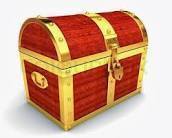Madagasikara (malgaxe)

Here is a detailed report about the Malagasy language and the name Madagasikara, based on the search results:
Malagasy Language and the Name Madagasikara
Official Status and Usage
-
Malagasy is the principal language spoken in Madagascar, with about 25 million native speakers as of 2015.
-
It is one of the two official languages of Madagascar, alongside French125.
-
The standard variety, called Official Malagasy, is based on the Merina dialect spoken in the central highlands around the capital Antananarivo5.
-
Malagasy is also spoken by Malagasy communities on neighboring islands such as Réunion, Mayotte, and Mauritius, as well as expatriate communities in Europe and North America45.
Linguistic Classification and Origins
-
Malagasy is an Austronesian language, specifically part of the Malayo-Polynesian branch, and is the westernmost Austronesian language5.
-
It is closely related to the Ma’anyan language of Borneo and contains many loanwords from Malay, Javanese, Bantu, Arabic, and Sanskrit, reflecting historical migrations and trade5.
-
The language has twelve dialects divided into Eastern and Western groups, with the Merina dialect forming the basis of the standard language5.
Writing System
-
Malagasy is written in the Latin alphabet, introduced by Western missionaries in the early 19th century5.
-
Before that, the Sorabe script, a local adaptation of the Arabic script, was used5.
Etymology and Name
-
The demonym "Malagasy" refers both to the people of Madagascar and their language5.
-
The island is called "Madagasikara" in Malagasy, pronounced with voiceless “i” and final “a” sounds6.
-
The name "Madagascar" (English/French) became popular in the medieval period and remains the official name in international contexts, while "Madagasikara" is the official Malagasy name2678.
Cultural Notes
-
Malagasy has a rich tradition of oral literature, including epic poetry such as Ibonia, which tells the story of a folk hero5.
-
The language reflects the island’s diverse cultural heritage, blending Austronesian roots with African and Arab influences.
If you want, I can prepare a full report on Madagascar’s financial history or other topics, or translate this summary into Portuguese or French.
- https://en.wikipedia.org/wiki/Malagasy_language
- https://en.wikipedia.org/wiki/Madagascar
- https://www.britannica.com/place/Madagascar
- https://www.wildmadagascar.org/people/malagasy.html
- https://www.wikiwand.com/en/articles/Malagasy_language
- https://www.kouya.net/?p=8420
- https://assets.publishing.service.gov.uk/media/65f31c38fa1851001101175c/Madagascar_toponymic_factfile.pdf
- https://www.sciencedirect.com/science/article/pii/S2468227619300778
 Nilton Romani
Nilton Romani
